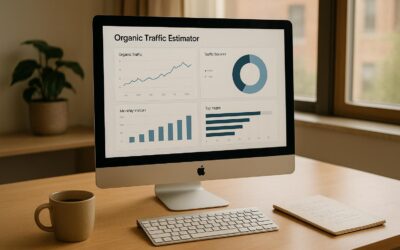- Boost Local Visibility: Reviews influence 17% of Google Map Pack rankings.
- Customer Impact: 93% of buyers rely on online reviews to make decisions.
- Faster Responses: 53.3% of customers expect businesses to reply within 7 days.
- Increased Engagement: Actively responding to reviews can increase review volume by 12%.
Key Features to Look For:
- Real-Time Alerts: Stay updated with instant notifications for new reviews.
- Review Analysis: Use sentiment analysis and competitor insights to improve strategies.
- Multi-Location Management: Simplify tracking reviews across multiple business locations.
- Integration: Sync with CRM, marketing, and automation tools for seamless workflows.
Quick Comparison Table:
| Feature | Benefit | Why It Matters |
|---|---|---|
| Real-Time Alerts | Instant updates on new reviews | Respond quickly to critical feedback |
| Sentiment Analysis | Understand customer satisfaction trends | Improve services based on insights |
| Multi-Platform Tracking | Monitor reviews on various platforms | Ensure no feedback is missed |
| CRM Integration | Centralized customer data | Streamline and personalize responses |
Takeaway: Monitoring tools help you manage reviews effectively, improve local rankings, and build stronger customer relationships.
Google Map Pack: 5 Proven Strategies for Local SEO Success 2024
Must-Have Features in Review Monitoring Tools
The right features can take review monitoring from simple tracking to a powerful tool for managing customer feedback. These features are essential for fine-tuning your review management approach and driving meaningful results.
Instant Review Notifications
Staying on top of new reviews is critical, and real-time alerts make this possible. Here’s how key notification features can make a difference:
| Feature | Business Impact |
|---|---|
| Custom Alert Triggers | Filter notifications by specific ratings, keywords, or locations to focus on what matters most. |
| Multi-channel Alerts | Get updates via email, SMS, or mobile apps to ensure no review goes unnoticed. |
| Priority Settings | Highlight urgent reviews that need immediate attention. |
| Team Assignment | Automatically route reviews to the right team members for faster responses. |
"Speed is the new currency of business", says Marc Benioff, CEO of Salesforce.
These features ensure you’re always in the loop, allowing you to respond quickly and effectively.
Review Analysis Tools
Analyzing reviews goes beyond reading feedback – it’s about uncovering patterns and actionable insights. Businesses that actively engage with reviews often see a 12% boost in their star ratings. Here’s what to look for:
| Analysis Feature | Purpose |
|---|---|
| Sentiment Analysis | Automatically assess the tone of reviews to identify trends in customer satisfaction. |
| Competitive Insights | Compare your performance with local competitors to understand your standing in the market. |
These tools help you turn raw feedback into strategies that improve customer experiences and overall ratings.
Business Software Compatibility
Seamless integration with other business tools is a game-changer. It streamlines processes and provides a unified view of customer interactions.
"Birdeye’s big benefit for me is the combination of Salesforce and Zapier integrations. When someone agrees to leave us a review, I just check a box in my Salesforce instance, and everything happens behind the scenes", explains Dustin Moore from Lighthouse Life Solutions, LLC.
| Integration Benefit | Impact |
|---|---|
| CRM Synchronization | Boosts average order value by 29%. |
| Automated Workflows | Reduces sales cycles by 30–50%. |
| Data Centralization | Enhances reporting capabilities by 30%. |
| Customer Journey Tracking | Increases customer lifetime value by 20–30%. |
A well-integrated tool connects with your CRM, customer service platforms, marketing automation tools, business intelligence software, and social media management systems. This ensures your teams have up-to-date information, enabling them to craft effective responses and strengthen customer relationships.
Setting Up Review Monitoring
Once you’ve explored the essential features, it’s time to dive into setting up your review monitoring system. A well-structured system helps manage customer feedback across locations while ensuring your brand voice stays consistent. Here’s how to make it happen.
Managing Multiple Business Locations
Centralizing review management is key to maintaining a unified feedback strategy, especially when handling multiple locations.
| Management Level | Responsibilities | Benefits |
|---|---|---|
| Corporate Team | Create policies, set brand guidelines, and develop strategies | Ensures a unified brand voice and overall consistency |
| Location Managers | Respond to reviews and engage locally | Provides personalized responses and timely actions |
| Marketing Team | Monitor performance, analyze trends, and share insights | Enables data-driven decisions and strategic improvements |
To streamline operations, use a local listing management tool that syncs profiles across all locations. This ensures accurate and up-to-date information everywhere.
Creating Alert Systems
An effective alert system ensures that reviews are categorized by priority, helping you respond quickly and appropriately.
- Define Alert Priorities
- Critical Alerts: Reviews with 1-star ratings or mentions of safety concerns.
- Standard Alerts: Reviews with 2–3 stars or containing specific keywords.
- Informational Alerts: Reviews with 4–5 stars offering general feedback.
- Configure Notification Channels Real-time notifications allow you to address feedback efficiently. As noted in a ReviewTrackers Case Study, "Receiving real-time feedback helps us pinpoint and resolve client pain points".
Channel Type Best Used For Response Expectation SMS/Mobile Critical reviews Immediate attention Email Standard reviews Prompt follow-up Dashboard Informational reviews Regular monitoring - Establish Response Templates Create standardized response templates that can be tailored to individual reviews. This helps maintain your brand’s tone while ensuring responses feel personal and thoughtful.
Measuring Review Performance
Once your alert system is in place, track performance using key metrics to fine-tune your approach:
| Metric | Considerations | Impact |
|---|---|---|
| Average Rating | Aim for a rating of 4.0 stars or higher | Boosts eligibility for "best" or "top" search results |
| Response Rate | Respond to as many reviews as possible | Strengthens customer engagement |
| Response Time | Reply promptly to reviews | Enhances customer satisfaction |
| Review Volume | Monitor the number of reviews across locations | Improves local visibility |
Make it a habit to review these metrics quarterly. Dive deeper by analyzing engagement data – like clicks for directions, calls, or website visits – to see how reviews shape customer behavior.
sbb-itb-880d5b6
Improving Map Pack Rankings with Reviews
If you’re serious about climbing the ranks in the Map Pack, customer reviews are your secret weapon. By keeping a close eye on feedback and making strategic updates, you can significantly boost your local visibility.
Getting More Customer Reviews
Customer reviews are a powerful driver of Map Pack rankings. In fact, 87% of consumers read reviews before making decisions. One effective way to gather more reviews? Automate your requests through SMS. This method can increase response rates by up to 30%.
"The key to increase Google reviews is in how you ask and what you offer. Don’t take customer feedback for granted: it costs customers time and effort." – Ioana Sima, Marketing Manager at Textmagic
Using Reviews to Update Business Profiles
Google reviews make up a whopping 57.5% of all online local reviews. By analyzing what customers are saying, you can refine your business profile to better reflect their needs and preferences. Here’s how:
- Highlight frequently praised features in your business description.
- Incorporate location-specific keywords directly from customer feedback.
- Adjust your operating hours based on accessibility comments.
- Update attributes that customers regularly mention in reviews.
These tweaks not only help optimize your profile but also ensure you’re staying in tune with what your customers value most.
Managing Fraudulent Reviews
Dealing with fake reviews is crucial for maintaining trust and rankings. Google’s Gemini AI works to detect and filter out spam reviews. To stay on top, aim to maintain authenticity and keep your rating above 4.0 stars. For example, a retail brand faced a product recall crisis but managed to preserve its Local SEO rankings by focusing on transparent communication and encouraging genuine feedback.
"Regularly responding to all reviews boosts traffic." – Nick Quirk, SEO Locale
To make the biggest impact on your Map Pack rankings, strive for an average rating above 4.1 stars. Why? Nearly 90% of consumers prefer businesses that actively engage with customer feedback. Responding thoughtfully to reviews – whether positive or negative – keeps your business visible and builds trust.
Next Steps
Now that we’ve covered the benefits of review monitoring and how to set it up, let’s dive into how to keep your review management process running smoothly.
Why Review Monitoring Matters
Online reviews are a big deal – 84% of Americans use them to make decisions. Plus, Google Maps Pack listings are known to drive a significant amount of clicks. These stats make it clear: staying on top of your reviews isn’t optional if you want to maintain a strong online presence.
Picking the Right Review Monitoring Tools
With 34% of marketers naming online reviews as their top customer acquisition channel, choosing the right tools is a critical step. Look for features that align with your business needs:
| Feature | What It Does | Why It Matters |
|---|---|---|
| Real-time Alerts | Notifies you of new reviews instantly | Lets you respond quickly (within 24-48 hours) |
| Multi-platform Monitoring | Tracks reviews across different sites | Ensures no feedback goes unnoticed |
| Analytics Dashboard | Helps you track customer sentiment | Gives insights to improve your service |
| Response Templates | Speeds up reply processes | Saves time while staying professional |
| Integration Options | Connects with your existing software | Streamlines workflows |
Once you’ve chosen a tool, sticking to a consistent maintenance routine will help you get the most out of it.
Keeping Up with Review Management
Timely responses and regular analysis are key to staying competitive in local search. Here’s how you can keep the momentum going:
Daily To-Do List:
- Check for new reviews.
- Respond quickly to any urgent feedback.
- Share glowing reviews on your social media channels.
Weekly To-Do List:
- Look for trends in reviews and update your business profiles as needed.
- Run campaigns to encourage customers to leave reviews.
Here’s a stat that might surprise you: 53% of customers expect businesses to respond to reviews within a week, but 63% say they never hear back. By staying consistent with your review management, you can meet – and even exceed – those expectations.
FAQs
How do real-time alerts in review monitoring tools improve customer engagement and response times?
Real-time alerts in review monitoring tools give businesses an edge by immediately notifying teams when a new review is posted. This quick notification system ensures companies can respond swiftly to both praise and criticism, demonstrating to customers that their feedback truly matters. Addressing concerns early can prevent issues from escalating, while timely responses to positive reviews show appreciation and build goodwill.
Acting fast not only helps resolve problems but can also turn a negative experience into a positive one. These alerts also help businesses spot trends and gauge customer sentiment, enabling them to adjust strategies to improve satisfaction and loyalty. In short, real-time alerts keep teams organized and proactive, making online reputation management much more effective.
What are the advantages of connecting review monitoring tools with your CRM system?
Integrating review monitoring tools with your CRM system brings some clear advantages that can simplify your processes and strengthen customer relationships. By merging customer feedback with your CRM data, you get a complete picture of customer interactions, making it easier to understand their needs and preferences.
This setup also allows for the automation of review requests and follow-ups, ensuring you engage with customers at the right time. Automating these tasks not only saves you valuable time but also improves response rates, giving you more genuine and useful insights. In the end, this combination helps you make smarter decisions, improve customer satisfaction, and support your business’s growth.
How can businesses manage and respond to reviews across multiple locations while keeping a consistent brand voice?
To stay on top of reviews across multiple locations, it’s smart to centralize the process with a reputation management tool. This approach makes it easier to monitor feedback and ensures your team can respond quickly and consistently.
One key step is to establish a clear response policy. This gives your team a framework for tone, style, and messaging, so every reply aligns with your brand’s voice. You can also consider using AI-powered tools to help automate responses and organize reviews. These tools save time and keep your replies uniform.
Don’t overlook the importance of addressing negative reviews quickly. Train your staff to handle these situations in a way that reflects your brand’s values. Doing this not only fosters trust with your customers but also reinforces your reputation across all your locations.




